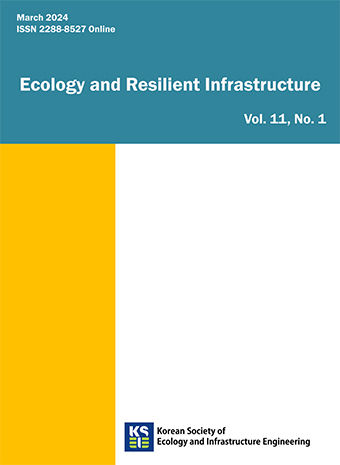Original Article
Abstract
References
Information
Airoldi, L., Abbiati, M., Beck, M.W., Hawkins, S.J., Jonsson, P.R., Martin, D., Moschella, P.S., Sundelof, A., Thompson, R.C., and Aberg, P. 2005. An ecological perspective on the deployment and design of low-crested and other hard coastal defence structures. Coastal Engineering 52(10-11): 1073-1087.
10.1016/j.coastaleng.2005.09.007Mayoral, O., Mascia, F., Podda, L., Laguna, E., Fraga, P., Rita, J., Frigau, L., and Bacchetta, G. 2018. Alien plant diversity in Mediterranean wetlands: a comparative study within Valencian, Balearic and Sardinian floras. Notulae Botanicae Horti Agrobotanici Cluj-Napoca 46(2): 317-326.
10.15835/nbha46210470- Publisher :Korean Society of Ecology and Infrastructure Engineering
- Publisher(Ko) :응용생태공학회
- Journal Title :Ecology and Resilient Infrastructure
- Journal Title(Ko) :응용생태공학회 논문집
- Volume : 7
- No :3
- Pages :145-159
- Received Date : 2020-08-12
- Revised Date : 2020-09-17
- Accepted Date : 2020-09-21
- DOI :https://doi.org/10.17820/eri.2020.7.3.145




 Ecology and Resilient Infrastructure
Ecology and Resilient Infrastructure







